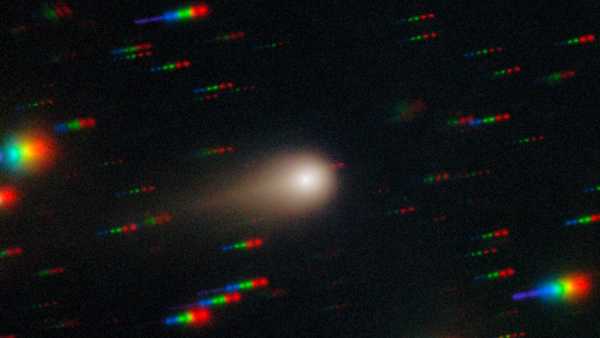
Inset: Illustration of the white dwarf. Main top image: Gaia22ayj in X-rays and visible light. Main bottom image: Zwicky Transient Facility images of Gaia22ayj. (Image credit: ZTF/Caltech Optical Observatories/A. Rodriguez/wift/XRT/NASA PanSTARRS/Univ. of Hawaii.)
Astronomers have identified a “missing link” that connects the death of Sun-like stars with the formation of their remnants – white dwarfs, represented by a “teenage vampire” white dwarf.
This vampire, however, has no interest in the blood coursing through your veins. The white dwarf in question is known as Gaia22ayj and is located approximately 8,150 light years from Earth; it is greedily gobbling up the stellar plasma of its companion star.
The team that made the discovery observed the white dwarf using the Zwicky Transient Facility (ZTF) at the Palomar Observatory in California. The researchers scanned the Northern Hemisphere night sky to find “transients” — astronomical objects that undergo rapid changes.
You may like
- Extreme 'zombie star' capable of ripping human atoms apart is flying through the Milky Way – and no one knows where it came from
- Astronomers find black hole ripping apart star in galactic collision. 'It's an unusual event'
- Stunning NASA Image Shows Dying Star at Center of Helix Nebula — and It May Have Just Killed a Planet
Gaia22ayj initially caught the attention of astronomers with its rapidly pulsating signal, leading to its classification as a detached white dwarf binary – two white dwarf stars that orbit each other.
However, this hypothesis did not quite fit with subsequent observations of Gaia22ayj, which showed that it was one of the most extreme pulsating objects ever recorded, increasing in brightness by 700% in just 2 minutes.
This is because Gaia22ayj is actually a white dwarf absorbing material from its companion star, and the system is in a rare and short-lived phase of its existence (or rather, death).
Sourse: www.livescience.com





